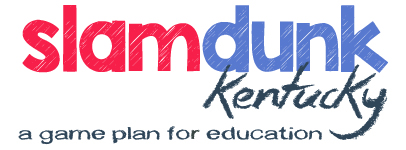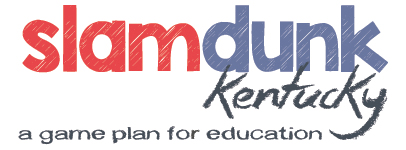Hybrid roles in teaching. What are they and how do they work? This series will take a look at hybrid roles throughout the state of KY, in order to share how various schools have made hybrid positions work for the benefit of their school. Beyond that hybrid teachers hope to share the challenges they face so those considering hybrid roles might gain insight as they plan for their own. What do hybrid roles look like in KY, how do they work, and how might they be made better?
Written by: Amy Clancy- ELA Specialist: Walton-Verona Schools – May 08, 2018
Am I helping? Am I making a difference? How do I figure out what will make the most impact? How can I take this standard and make it involve movement and deeper thinking or collaboration? How can I get students to buy-in and to have agency in their own learning- including my own students? What do my students need this week? Whew! Just a few of the questions that swirl in my brain as an ELA Specialist AND a teacher at Walton-Verona Middle School. Why? Because I feel that literacy crosses all contents and there are ways to integrate literacy experiences that connect directly to the content a teacher is delivering as well as engage students. Sounds easy, but most teachers know this takes a lot of work. My hybrid role this year has been a lot of work; it’s a learning experience, but my school has given me the agency to conduct my role as I see fit, respecting me as the ELA teacher professional that I am.
I’m National Board re-certified in Early Adolescent English/ Language Arts and my passion is around pedagogy and connecting it to students’ lives, increasing student agency, and using critical thinking and problem solving among other things. With 18 years experience in ELA as a teacher and as a leader through state organizations, I came to my hybrid role understanding the possibilities in integrating literacy across all content. I was able to develop and plan with other teachers, all while maintaining a presence among all students in grades 5-8.
Autonomy is an important aspect of any hybrid role. As the new middle school “ ELA Specialist,” it was largely left undefined, giving me free reign to try and do what I felt was valuable. My role involves bringing literacy lessons and experiences into all classrooms. This year we have had breakouts connected to content e.g the Solar eclipse; a Survivor game connected to a 6th grade matter unit; Interactive practice for extended response and other reading/writing skills; use of Kagan groupings and thinking strategies to break down teacher workbooks in order to make the work more engaging for students; interactive learning experiences from core content, teaching mini-lessons, helping in writing conferences and I look for resources for teachers when asked, all of this is done without micromanagement from my admin. It has been a pretty busy year so far! Frankly, ELA Specialist alone is a job for one person, but I also have a second job, I teach 2 classes a week. That is what makes my role hybrid.
Juggling my role as ELA Specialist for essentially 20+ teachers, meetings with the admin and co-op, working with low and high level kids and planning for future teacher needs (which most often involves manipulatives, movement, cooperative groups, etc.) None of which just happens without extensive planning, I also have to plan and teach two classes of 40+ students. One class is Creative Writing and the other is Yearbook. Yearbook alone is a huge responsibility for me in addition to teaching my students and serving as ELA Specialist.
The obstacles of my role involve planning, finding time to research and create needed lessons/activities for other teachers and for my own classes, conflicts in scheduling- where one teacher wants me in their room but I have my own class that day, etc. There are challenges such as getting teachers to buy-in and use my services, to see me not as a threat, but as an asset. And finally, my biggest challenge is in my mind- analyzing what I’ve done and what I should do and if what I am doing is effective.
Finally, Hybrid roles require training and lots of it. The most helpful has been the training my school has provided and paid for. I was able to attend ELA conferences, ECET2 and EdCamps, training through Hope Street KY as a current fellow, Kagan training and PEBC training. Without this professional development, I would not have transformed my way of teaching to fit the needs of our school and our students. One important component of a hybrid role is the training WVMS provides and I am so grateful that I am able to attend any training I feel I need.
I believe my colleagues find me valuable and my administration supports me 100% as I feel my way around and begin to define how I can help kids the most. I realize that it will take me 2 or 3 years possibly before I find what will truly help, support, uplift, and complement what Content teachers and ELA teachers need, what our ever-changing student populations needs, and what targeted role I need to play to make the most impact on student lives. For my first year in this role, students have been able to review previously obtained content knowledge as well as practice cooperation and teamwork, problem solving and failure. When one experiences obstacles and failures, reflecting is essential. The most important part of learning is reflecting – and any content area can provide time for students to reflect and process what they’ve learned, their confusions or questions. I will continue to reflect in this hybrid role as I take on year 2- which will be easier since I will only have one class next year. In addition, after much research and collaboration, I have focused on a different approach for next year, which has me excited about the possibilities.
Overall, this new role has been worth it, even though I do not get paid extra, I am paid with respect for my knowledge and experience and for me, that makes great strides in professionalizing Educators.




Follow Us!